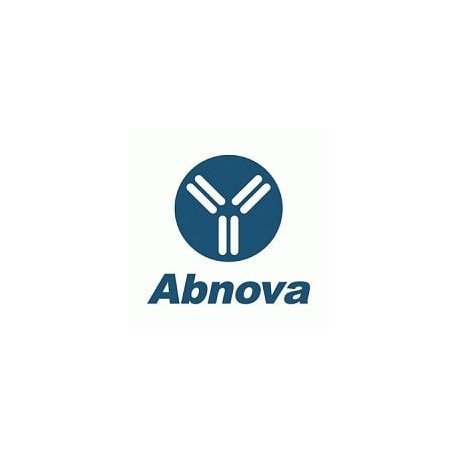Cart 0 Product Products (empty)
No products
To be determined Shipping
0,00 € Total
Prices are tax excluded
Product successfully added to your shopping cart
Quantity
Total
There are 0 items in your cart. There is 1 item in your cart.
Total products (tax excl.)
Total shipping (tax excl.) To be determined
Total (tax excl.)
Data sheet of PDCD4 polyclonal antibody
| Brand | Abnova |
| Product type | Primary antibodies |
| Reactivity | Clawed frog,Human,Mouse,Rat |
| Host species | Rabbit |
| Applications | WB,ELISA,IHC-P |
More info about PDCD4 polyclonal antibody
| Brand: | Abnova |
| Reference: | PAB10308 |
| Product name: | PDCD4 polyclonal antibody |
| Product description: | Rabbit polyclonal antibody raised against synthetic peptide of PDCD4. |
| Gene id: | 27250 |
| Gene name: | PDCD4 |
| Gene alias: | H731|MGC33046|MGC33047 |
| Gene description: | programmed cell death 4 (neoplastic transformation inhibitor) |
| Immunogen: | A synthetic peptide corresponding to C-terminus of human PDCD4. |
| Protein accession: | NP_055271;O15501 |
| Form: | Liquid |
| Recommend dilutions: | ELISA (1:10000-1:50000) Western Blot (1:1000-1:10000) Immunohistochemistry (1:100-1:300) The optimal working dilution should be determined by the end user. |
| Storage buffer: | In 20 mM KH2PO4, 150 mM NaCl, pH 7.2 (0.01% sodium azide) |
| Storage instruction: | Store at 4°C. For long term storage store at -20°C. Aliquot to avoid repeated freezing and thawing. |
| Quality control testing: | Antibody Reactive Against Synthetic Peptide. |
| Note: | This product contains sodium azide: a POISONOUS AND HAZARDOUS SUBSTANCE which should be handled by trained staff only. |
| Product type: | Primary antibodies |
| Host species: | Rabbit |
| Antigen species / target species: | Human |
| Specificity: | This antibody reacts with Pdcd4 protein that is either phosphorylated or non-phosphorylated at Ser457. |
| Reactivity: | Clawed frog,Human,Mouse,Rat |
| Application image: |  |
| Application image note: | PDCD4 polyclonal antibody (Cat # PAB10308) was used at a 1 : 100 dilution to detect PDCD4 by immunohistochemistry on mouse colon tissue. Tissue was fixed in 4% paraformaldehyde and paraffin embedded. Tissue sections were deparaffinized and treated by trypsinization before staining. Personal Communication. M Young, NCI, Bethesda, MD. |
| Applications: | WB,ELISA,IHC-P |
| Shipping condition: | Dry Ice |
| Publications: | Epidermal expression of the translation inhibitor programmed cell death 4 suppresses tumorigenesis.Jansen AP, Camalier CE, Colburn NH. Cancer Res. 2005 Jul 15;65(14):6034-41. |


